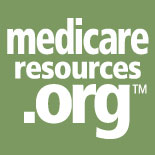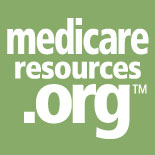House|Senate
112th Congress, Vote 77; Senate #34
Ryan Budget Bill 2011
Official Title: Establishing the budget for the United States Government for fiscal year 2012 and setting forth appropriate budgetary levels for fiscal years 2013 through 2021.
HConRes 34: Ryan budget bill
Rejected by Senate, 40-57, 3 not voting, May 25, 2011
Synopsis: In April 2011, Rep. Paul Ryan (R, Wisconsin) published The Path to Prosperity, which was used as the Republican Party’s fiscal year 2012 budget resolution (H.Con.Res.34). Ryan was the Chairman of the House Budget Committee, and the proposal is often referred to as the Ryan Budget.
H.Con.Res. 34 included $5.8 trillion in spending cuts over the coming decade ($6.2 trillion in cuts when compared with the budget proposed earlier in 2011 by President Obama), but also a $4.2 trillion reduction in tax revenue over that same time frame.
The proposed spending cuts incorporated numerous changes to health-related programs, including Medicare and Medicaid, along with modification or repeal of several portions of the Affordable Care Act. For this synopsis, we’re focusing on how H.Con.Res. 34 would impact Medicare:
- Starting in 2022, for Americans born in 1957 or later, traditional Medicare would switch to a “premium support model” (Ryan differentiates this from a voucher system). Those born prior to 1957 – ie, already enrolled in the current Medicare program as of 2022 – would be able to retain their existing Medicare coverage, although they would have the option to switch to the premium support model instead.
- For people who become eligible for Medicare in 2022 or later, the government would provide a fixed contribution (ie, “premium support”) that could be used to purchase standardized private health insurance from carriers that agreed to participate in a “Medicare exchange.” The available coverage options would be guaranteed issue, and premiums would not be tied to an enrollee’s health status.
- Premium support payments would be made directly from the government to the enrollee’s health insurance carrier, and if the total premium was more than the contribution made by the government, the enrollee would pay the difference. Wealthier enrollees would receive smaller subsidies, and sick enrollees would receive additional subsidies in order to afford more robust coverage. Lower-income enrollees would also receive additional help in the form of government contributions to a medical savings account that they would use to offset their out-of-pocket costs.
- A “risk review audit” would collect fees from Medicare insurers that had healthier enrollees, and those funds would be used to compensate carriers that had less healthy enrollees (similar to the ACA’s risk adjustment program).
- The subsidies in 2022 for the average 65-year-old would be based on the value of Medicare at that time, and would be indexed to inflation in subsequent years (health care costs have historically outpaced inflation considerably). The CBO reported that the expected premium support payment for the average 65-year-old in 2022 would be $8,000, although the wealthiest enrollees would receive only 30 percent of that amount (tying benefits to income is not new to the Medicare system; high-income beneficiaries already pay more for Medicare Part B and Part D).
- Starting in 2022, the eligibility age for Medicare would gradually increase over the next decade from 65 to 67.
- Portions of the ACA would be repealed, including some sections that pertain to Medicare beneficiaries.
Why supporters pushed for this bill
- Ryan’s Path to Prosperity calls for primary balance (when spending minus interest payments is equal to revenue) by 2015, and for reduced government spending. Fiscal conservatives and supporters of “smaller government” appreciate that aspect of the budget proposal.
- Free-market proponents believed that a switch to private health insurance (made affordable by premium support stipends) would drive competition and innovation in the private Medicare market. The concept of Medicare privatization is not new, and supporters of the idea were generally receptive to H.Con.Res. 34.
- Changes to the Medicare system wouldn’t take effect until 2022, so people who were 55 or older in 2011 would still be covered under traditional Medicare once they reach age 65 (although if they preferred the premium support program outlined in Ryan’s Path to Prosperity, they’d be allowed to switch to that model instead). Delaying implementation of the premium support program helped to alleviate controversy among current Medicare beneficiaries and those who will become eligible for Medicare in the next few years.
Why opponents tried to stop the bill
- In addition to changing Medicare to a premium support program, H.Con.Res. 34 calls for repeal of several portions of the Affordable Care Act, including the provision to close the donut hole in Medicare Part D. Under the ACA, the donut hole will be gone by 2020, but this would not be the case if Ryan’s budget proposal were to be enacted. In that case, seniors would once again be on the hook for thousands of dollars in annual prescription spending while in the “donut hole.”
- The Center on Budget and Policy Priorities scored Ryan’s Path to Prosperity (as opposed to the exact language of H.Con.Res. 34). The CBO explained that “under the proposal, most elderly people would pay more for their health care than they would under the current Medicare system.”
- There’s no provision in H.Con.Res. 34 to make Medicare participation mandatory for seniors. Thus it’s possible that some younger, healthier seniors might opt out of the program, driving up premiums for older, sicker enrollees. This is unlikely in the early years, but if the premium support (linked to inflation) doesn’t keep up with the cost of premiums (linked to healthcare cost growth), it’s a possibility in future years, and could destabilize the Medicare program.
- If the Medicare eligibility age is increased to 67, seniors age 65 and 66 would have to obtain coverage in the private (non-Medicaid-eligible) health insurance market instead. This would drive up costs for the rest of the private market, as older enrollees tend to have higher healthcare costs.
- Supporters of public benefit programs like Social Security, Medicare, and Medicaid were sharply critical of Ryan’s Path to Prosperity, noting that it would shift the lion’s share of proposed spending cuts onto individuals who rely on those programs, while upholding government spending on defense and providing tax cuts for wealthier Americans.
- But among some fiscal conservatives – including Senate Republican Rand Paul, who voted against H.Con.Res. 34 in the Senate’s test vote – Ryan’s budget resolution wasn’t conservative enough, and didn’t include enough spending cuts and reforms to entitlement programs.
| 05/25/2011 | Status: Senate motion to proceed rejected |
More: select a member to see his or her other key Medicare votes.
| Yes (40) | ||
|---|---|---|
| R | Jefferson Sessions | AL |
| R | Richard Shelby | AL |
| R | John Boozman | AR |
| R | Jon Kyl | AZ |
| R | John McCain | AZ |
| R | Marco Rubio | FL |
| R | Saxby Chambliss | GA |
| R | John Isakson | GA |
| R | Charles Grassley | IA |
| R | Michael Crapo | ID |
| R | James Risch | ID |
| R | Mark Kirk | IL |
| R | Daniel Coats | IN |
| R | Richard Lugar | IN |
| R | Jerry Moran | KS |
| R | Mitch McConnell | KY |
| R | David Vitter | LA |
| R | Roy Blunt | MO |
| R | Thad Cochran | MS |
| R | Roger Wicker | MS |
| R | Richard Burr | NC |
| R | John Hoeven | ND |
| R | Mike Johanns | NE |
| R | Kelly Ayotte | NH |
| R | Dean Heller | NV |
| R | Robert Portman | OH |
| R | Thomas Coburn | OK |
| R | James Inhofe | OK |
| R | Patrick Toomey | PA |
| R | Jim DeMint | SC |
| R | Lindsey Graham | SC |
| R | John Thune | SD |
| R | Lamar Alexander | TN |
| R | Bob Corker | TN |
| R | John Cornyn | TX |
| R | Orrin Hatch | UT |
| R | Mike Lee | UT |
| R | Ron Johnson | WI |
| R | John Barrasso | WY |
| R | Michael Enzi | WY |
| Not Voting (3) | ||
|---|---|---|
| R | Pat Roberts | KS |
| D | Charles Schumer | NY |
| R | Kay Hutchison | TX |



